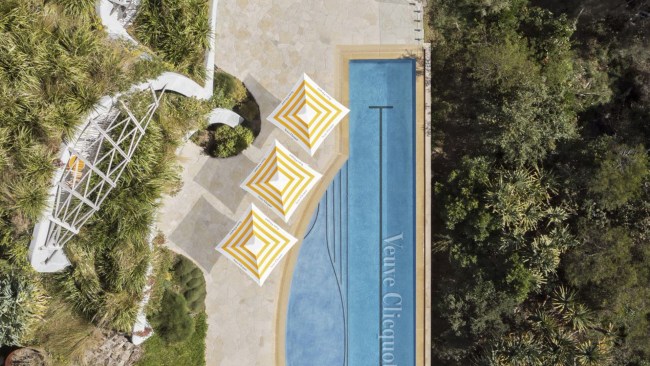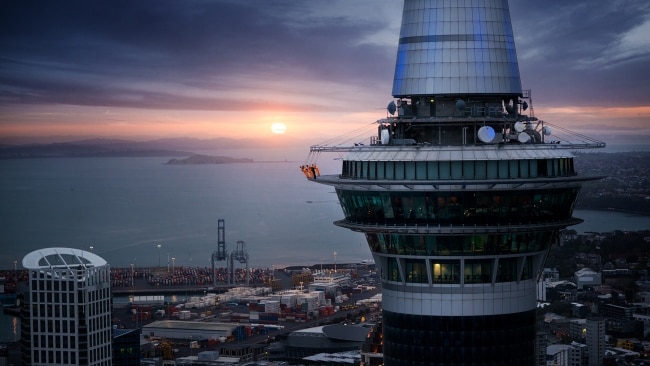Grapevines and grand galleries
ROAM the country roads of Italy to explore its rich historical heritage.

HENRY James called Perugia in central Italy the “city of the infinite view”. The Umbrian capital, a rich and fertile area set along an extinct volcanic mountain range, was a mecca for the ancient Etruscans but now is better known as a flourishing university hub, home to more than 40,000 local and foreign students.
I am visiting the city that so transfixed the American author as part of an escorted tour from Rome through central and northern Italy to Venice, which gets off the beaten track en route to explore lesser-known gems such as Orvieto, Assisi and Perugia, plus Tuscan hill towns, abbeys and stunning, little-visited coastal stretches.
Umbria, I am delighted to find, is one of Italy’s produce heartlands — a strong proponent of the Slow Food philosophy — and our small group is being introduced to some of its gastronomic highlights.
First stop is the walled city of Orvieto, where we stroll through a maze of cobbled streets to Lorenzo Polegri’s Ristorante Zeppelin.
We feast on antipasti, accompanied by local wine, as Polegri treats us to a hands-on pasta-making class. The gregarious chef reveals that the secret to the perfect spaghetti is in the eggs. Geese eggs are best, he says, though 13 large chicken eggs, mixed with just under a kilo of flour, will suffice at a pinch.
Polegri guides us through the painstaking process of kneading and rolling the dough, before we cut it into a variety of shapes, from wide strips of pappardelle to flat fettuccine and the finest vermicelli.
We enjoy the fruits of our labour for lunch, topped with a rich, homemade tomato sauce made from seasonal local ingredients, true to the Slow Food philosophy.
Orvieto is also blessed with exquisite shops and boutique hotels, and is a popular stopover for those wanting to avoid the crowds of nearby Tuscany.
Its cathedral is one of Italy’s most famous, renowned for the intricate carvings and mosaics on its facade depicting stories from the Old and New Testaments.
But if the Cathedral of Orvieto is a must-see for modern-day pilgrims, nearby Assisi is the holy grail. One of the most-visited sites in Italy, Assisi’s religious significance ensures it is just as popular with Italians as it is with international tourists. Follow the crowds to the imposing 13th-century basilica, where the body of St Francis of Assisi is believed to be buried.
There are estimated to be more than six million olive trees in Italy, and it is harvest season when we visit Umbria’s Frantoio Ragani groves, a world away from the bustle of Rome, where our journey began.
Our driver navigates the coach down narrow dirt roads to the olive farm run for three generation by the Ragani family, who press their own olives plus those from neighbouring farms in a co-op arrangement.
As we watch the latest batch being processed, patriarch Emanuele Ragani and his family grill fresh ciabatta on open coals, drizzling the hot bread with their own oil and sprinkling it with sea salt. It’s spicy and delicious, and I vow to consume only the best-quality olive oil in future.
Onwards to Tuscany, and the groves of olive trees are replaced by hectares of grapevines, their leaves turning a burnished gold and deep red in the late autumn sun. We enter the Chianti region, where for nearly six centuries the Marchesi Mazzei family has produced some of the area’s most prestigious wines at its state-of-the-art Castello di Fonterutoli vineyards near Florence.
As with their olive oils, the Italians take their chianti seriously, working hard to preserve the heritage of wineries and the region’s rich culture and history. An entire valley, the Val d’Orcia, which extends from the hills south of Siena to Monte Amiata, has been designated a UNESCO world heritage site.
Similarly prized is the walled city of San Gimignano, about two hours’ drive south of Monte Amiata, where wealthy families in medieval times tried to outdo each other by building the tallest towers. There were once 76 towers; only 14 remain.
There’s a plethora of shops in the maze of streets offering quality souvenirs, from ceramics and leather goods to regional cheese and wine. And some say the best gelato in all of Italy is to be had at Sergio Dondoli’s Gelataria in the main piazza. Dondoli’s award-winning concoctions come in flavours such as rosemary and raspberry, champagne mixed with grapefruit or saffron cream with roasted pine nuts.
Just off the main piazza in San Gimignano is the Chapel of Santa Fina, with stunning frescoes honouring St Seraphina, born here in 1238. For movie buffs, this was the church that two sisters, played by Dames Maggie Smith and Judi Dench, tried so desperately to save during World War II in the 1999 film Tea with Mussolini.
Next stop is Venice, and it’s a long drive ahead. As we travel north through central Italy towards the Alps, the landscape dramatically changes to dark-green rolling plains, where cows graze and produce the highly sought-after milk used in parmigiano-reggiano cheese. Parma ham is another of the region’s famous products.
It is dark when we arrive on the outskirts of Venice, and we have gone as far as we can by coach. We are to be transferred to our hotel by private water taxis, and a flotilla awaits at the dock.
Sleek in dark cherry wood, with cream leather interiors, the vessels look as if they are straight out of a James Bond movie.
As we speed along the Grand Canal, dodging a late-night gondola or two, we catch tantalising glimpses of the opulent interiors of the palazzo lining the waterway — murano glass chandeliers highlight floor-to-ceiling frescoes with windows draped in rich velvet curtains. In any other city it would all be too much, but here in Venice, as with elsewhere on our tantalising tour of Italy, it seems just perfect.
Georgina Windsor was a guest of Insight Vacations.
Checklist
INSIGHT Vacations’ 16-day Country Roads of Italy escorted journey travels from Rome to Venice, visiting lesser-known towns en route. From $5025 a person twin-share, including 15 nights’ accommodation in premium hotels, including the Villa Piccolo Castello in Tuscany. Travel is by luxury air-conditioned coach and signature experiences include VIP entrance to the Vatican museums and Sistine Chapel. Departures from June to October.
More: 1300 301 672; insightvacations.com.



